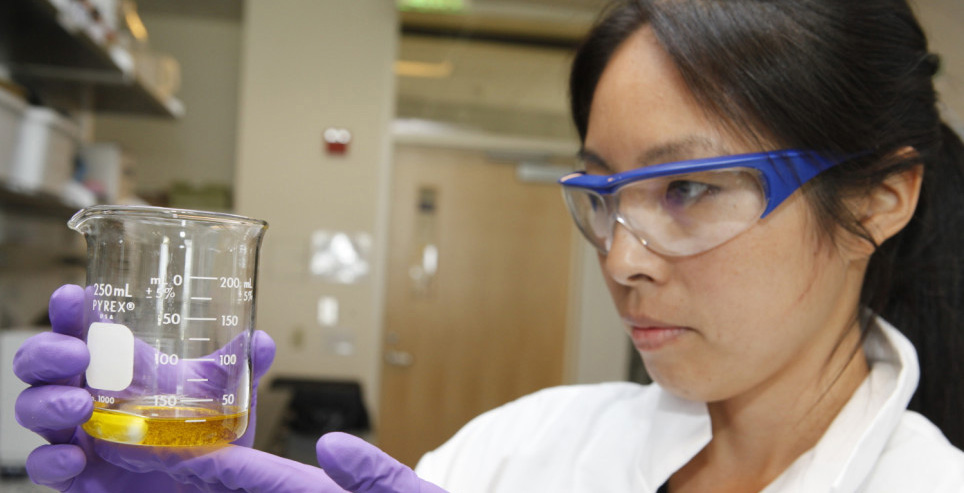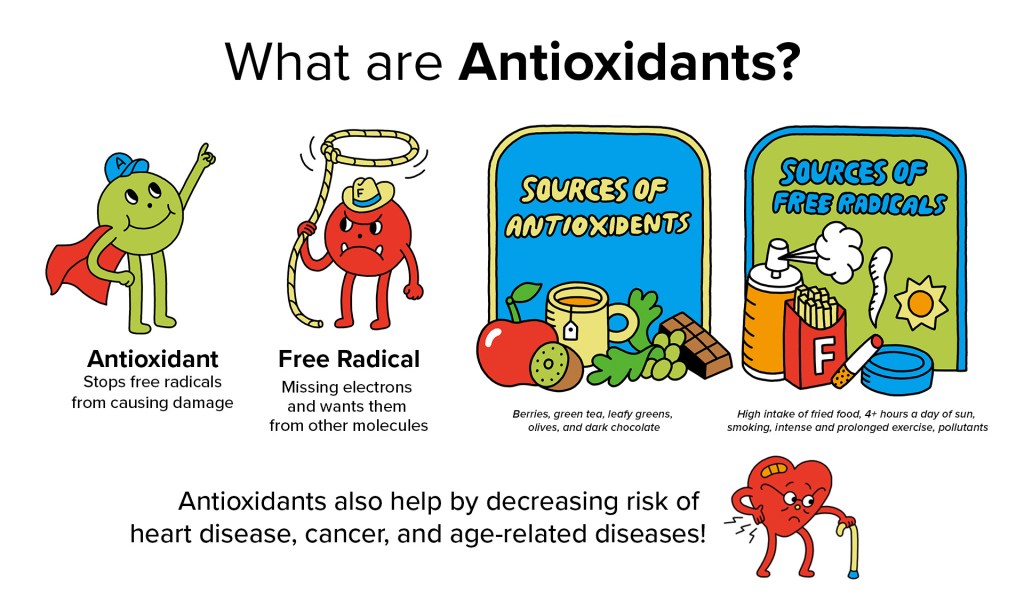Take a moment to examine the images below. What do you notice? What do you wonder? Keep track of your ideas on the Olives and Antioxidants Worksheet.
Phenomenon #1

Did you notice that the material in the left image has similar coloring to the material in the right image? Olive pomace (material in the left image) was added to the paving material in the right image. Not quite what you would expect in paving material, right? Why would you add olives to road paving material?
From our partners:
Phenomenon #2
Take a look at the collection of images below. What do you notice and wonder about each? What might they have in common?

You might have notice color changes, wrinkles, and cracks. What might be causing that to happen? Well, this is all related to why we might use olive pomace in road paving. Let’s explore this phenomenon further by looking at the different properties of plants like olives and how they or their byproducts can be used to solve real-world problems.
Oxidation Activity
Like we discussed before, the smashed olives must be added to the roads for a reason, but what is that reason? What is the problem that the olives are being used to solve? What properties of the olives are contributing to the road-building material? To figure this out, we’re going to investigate other foods that share properties with olives, to see if we can uncover their common characteristics.
First, take a moment to create a model on your Olives and Antioxidants Worksheet that explains your current ideas about what might be going on with our olives and cement. If you can, work with someone else and compare your models. Are there ideas that you might want to incorporate from that discussion?
Materials
Olives And Antioxidants Worksheet
Small piece of milk chocolate (10-50%) (one per student)
Small piece of dark chocolate (50-90%) (one per student)
Lemon juice (1 tsp per group)
Apples-sliced into circle slices (3 per group)
Paper plates
Water (1 tsp per group)
Protocol
After learning how antioxidants affect food browning, let’s see what foods rich in antioxidants can do for our skin. Take notes on your worksheet at you watch the video.
Reflection Questions
- Looking at your evidence, what can you now explain about our original phenomenon?
- Revise your model to explain why adding olive mash to cement might be helpful.
- Brainstorm other ways antioxidants might be used to help solve problems.
So What Is Going On? Antioxidants At Work!
Selina Wang is a Food Chemist at the Olive Center at the University of California in Davis. In one area of her lab’s research, Want studies different foods that contain antioxidants like chocolate, grapes, and olives. Olive oil has many health benefits, including being high in antioxidants.

All olives grow on trees. Olive oil is made from grinding up olives, letting them sit for a bit, and then extracting the oil that is formed. Here is a picture of the olive mash that is left behind after the oil is extracted; it is called pomace. Only 20% of the olive is used in olive oil! What happens to the rest? Olive pomace is still filled with a ton of antioxidants, so Selina Wang is working to find ways we can use it to solve a range of problems. As part of her efforts, she partnered with a cement company. After grinding up the pomace to a fine texture, they add it to their cement for road paving. Can you guess what the antioxidants left in the olive pomace are doing to the roads?

Just as the antioxidants in the lemon juice kept your apple from browning, the antioxidants in the olive pomace are stopping the roads from cracking. How cool is that?!

Source: ScienceFriday
For enquiries, product placements, sponsorships, and collaborations, connect with us at hello@zedista.com. We'd love to hear from you!
Our humans need coffee too! Your support is highly appreciated, thank you!

